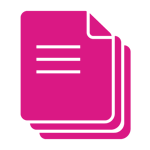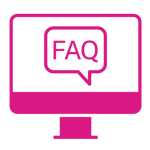
If you have any breast changes or symptoms, see your doctor straight away. Do not visit BreastScreen NSW.
Benefits
- Regular screening mammograms prevent deaths from breast cancer.1472
- For women aged 50–74, regular breast screening is the best way to find breast cancer early.1550
- A breast screen can find very small cancers – the size of a grain of rice – before they can be felt or noticed by you or your doctor.1536
- Finding breast cancer early means a better chance of survival.1473
- If breast cancer is found early through BreastScreen NSW, it is likely to be small, and successfully treated. It is also less likely that you will need a mastectomy.1480,1540
For women aged 50–74, the breast cancer death rate has decreased by almost half (45%) since the Breast Screen Australia Program began.1474
Concerns
We understand you might be anxious about having a breast screen. We answer some common concerns below, with information to help ease these concerns. If you don’t see the information you need, speak to your doctor or call us on 13 20 50.
I’m concerned about:
- Privacy and modesty - All our radiographers are female and will always respect your privacy. Your radiographer will work with you to make you as comfortable as possible.
- What to expect - It’s natural to be concerned about the unknown. Watch this video to find out what happens at a breast screen. The whole appointment only takes 20 minutes.
- Pain - Tell your radiographer if you feel pain. She’ll work with you to make you as comfortable as possible. You can stop at any time. The screening machine will compress your breast firmly for 10–15 seconds to take an image. There are usually two images taken of each breast. It is normal to feel discomfort, but this should last only a few seconds.
- Cost - All breast screens with BreastScreen NSW are free.
- Accuracy - For women aged 50–74 breast screens are the most reliable way to detect breast cancer early, but they aren’t 100% perfect.1550 There’s a small chance a breast screen can appear normal, but cancer is present. A small number of women develop breast cancer in between regular screens.
- Overdiagnosis - Most breast cancers found through BreastScreen NSW would grow and become harmful if not treated.1551 However, some breast cancers would not. It is not possible to tell which breast cancers may be harmful and which breast cancers may not, based on their appearance on a breast screen. Finding and treating a breast cancer that would not become harmful is sometimes referred to as 'overdiagnosis’.
- Radiation - A breast screen will expose you to a small amount of radiation. Modern x-ray screening equipment is closely monitored to use the smallest amount of radiation possible. Radiation exposure from a breast screen is about the same amount of radiation as you’re exposed to in 18 weeks of normal day-to-day activity.1537 This is the natural radiation in the environment from sun, rocks, soil, buildings, air, food and drink.1484 The benefits of screening outweigh the risks of radiation exposure.
- More tests - If your breast screen shows something we need to investigate, we’ll ask you to have more tests, these are also free. Around 90% of women called back for more tests do not have breast cancer.1478
- Breast density - A breast screen is still the most effective way of reducing deaths from breast cancer in the population of women over 50, including for women with dense breasts.1539
- Breast implants - Most women who have breast implants can have regular breast screens. Please let us know about your breast implants when booking and again at your appointment. Our female radiographers are specially trained in obtaining the best images possible. It does not matter what type of implant you have or if it is inserted over or under your chest muscle.
Find answers to more Frequently Asked Questions.
Understand this important cancer screening test.
Find out the risks of breast cancer.
Find out if you are eligible to screen with BreastScreen NSW.
Know what you should look out for.
What to expect before during and after your breast screen.



